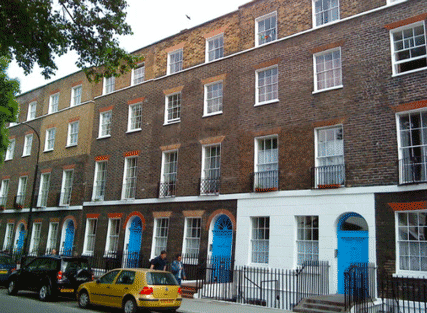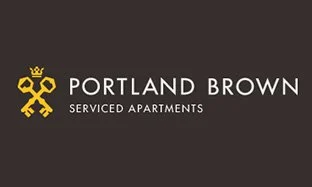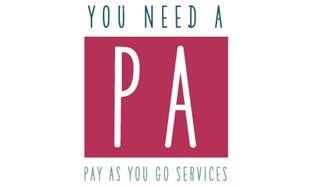You would have had to have been living under a rock to not know how expensive it is to rent a home in London. But is this the only difference between renting in London and renting in the rest of the UK?
To help landlords and their tenants understand how renting in the capital compares to the rest of the country, we’ve asked 5 Star rated Landlord Insurance provider Just Landlords to offer some insight…
Firstly, there’s the price
And it’s not just expensive to be a tenant in London. While renting a one-bedroom apartment in a nice area can cost you anywhere between £1,300 and £2,000 per month, landlords are facing spiralling house prices and sky-high deposits just to invest.
A whopping 25% deposit is now required to purchase an investment property in London.
David Gape, the Owner of estate agency Independent London, puts that into perspective: “In Bermondsey Street, SE1, a one-bedroom apartment is now selling at £1,000 per square foot; that means a 500 square foot apartment costs half a million pounds. So you then have to stump up about £125,000 of your savings just for the deposit. Add to that a landlord crunching, Stamp-ing (kicking and screaming) Duty of £30,000 for an additional home, and then add mortgage fees, and you have an enormous Watford Gap in your bank balance.”
And the Government isn’t helping with its further changes to landlord taxes.
“The Government is taking the royal PRS in terms of taxes and duty,” insists Gape. “You can no longer reclaim all of the interest payments from your mortgages on your tax return. Go figure, the reason behind this is nonsensical in the extreme; as a business, you have to declare all of your income as taxable to start with, so you need to think very carefully before selling your mother to invest in this market.”
But it is a fast-paced market
Although the price of investing and renting in London may be an instant turn-off, it’s essential to remember that this is one of the most vibrant and diverse property markets – not just in the UK or Europe, but also in the whole world.
For tenants, this means that the market moves extremely quickly, which can mean much more (and fiercer) competition, but it does mean that the turnaround of properties is faster and you’re likely to always have options on your plate.
For landlords, the key to this market is almost certainly the return in rent from your hard-earned investment.
“The capital growth far outstrips anything else in the UK, barring a few Oligarchical postcodes on the coast,” observes Gape.
And there are fantastic transport links and amenities
New transport links and regeneration schemes are rife across the capital – one example is the Walworth Road near Burgess Park. For the London tenant, these amenities are key. As Gape explains: “There is no point in moving into London, getting spanked on the rent and the wine, and still having a one-hour commute to work.”
This means that renters are always on the lookout for areas with exceptional infrastructure. Landlords should use this to their advantage and find properties with excellent transport links.
“You will rent these properties quickly”, insists Gape. “At high rents, vacant periods can add up, so a good location is always a selling point.”
But he warns: “The promise of future infrastructure is only good for investors; tenants need it now, so you may have to wait for your canny investment to make its best returns.”
There’s a whole world to explore
Living in London doesn’t simply mean renting a property in the centre of London. If you consider London to be a micro economy in the UK, then each of its postcodes are micro economies within that micro economy.
To tenants, this means that rent prices can vary drastically from one location to another. For instance, Shad Thames and the Old Kent Road are both in SE1 under Southwark Council, but Shad Thames is a beautiful riverside area made up of warehouse conversions and modern new builds, surrounded by boutique shops and posh eateries, whereas the Old Kent Road is £60 on the Monopoly board for good reason…
Landlords must consider what the most important factor of their investment is – is yield always the key feature? Gape highlights the significance of following your instinct and realising that higher yielding properties tend to cater for the lower end market – this can increase your workload, see you get hit by rent arrears, constantly have new tenants moving in and experiencing more damage to your properties.
With such a variety of property types and locations on offer within the capital, you may be wise to look for good value, ready-to-go rentals.
“If you buy a nice two-bed, two bath in Canada Water and let to two doctors for two years, you can sit back and relax, collect the rent, get some shut-eye, and get better, faster capital appreciation on a higher standard property,” explains Gape.
Look out for licensing
Landlord licensing schemes have been introduced in different London boroughs to root out rogue landlords and improve the standard of rental accommodation in these locations.
This should mean that tenants receive a higher level of housing and are treated fairly by their landlord – an issue that has plagued the private rental sector as it has grown.
But landlords need to be aware of the different licensing schemes being operated borough-to-borough. If you own a House in Multiple Occupation (HMO), you will be subject to the mandatory licensing rules that are in force nationwide, but the additional licensing schemes run by London boroughs are varied and often not well publicised.
Make sure to keep up to date with your obligations, in order to protect the tenants that you’re letting to.
So, if you’re looking to either invest or live in a rental property in the capital, make sure you do your homework – there’s a great big world out there!



















